The Tatacoa Desert is home to some of Colombia’s most incredible landscapes that will leave you feeling like you’ve been transported into space.
You’ll experience the Mars-like, barren Red Desert and the moon-like Grey Desert. As well as having one of the clearest views of the Milky Way as the Desierto de Tatacoa is one of the best places to go stargazing.
And despite its magnificence, the desert is very much a little-known gem in Colombia. Sure, there’s tourism infrastructure, but you’ll be a long way from the crowds of the most popular spots in the country.
So if you’re planning on visiting, this guide is for you. There’s everything you could need to know to plan your visit and have the best time.
Find out how to get to the Tatacoa Desert, where to stay, what to do and more recommendations and top travel tips…
Some of the links below are affiliate links, meaning, at no additional cost to you, I may earn a small commission if you click through and make a qualifying purchase.
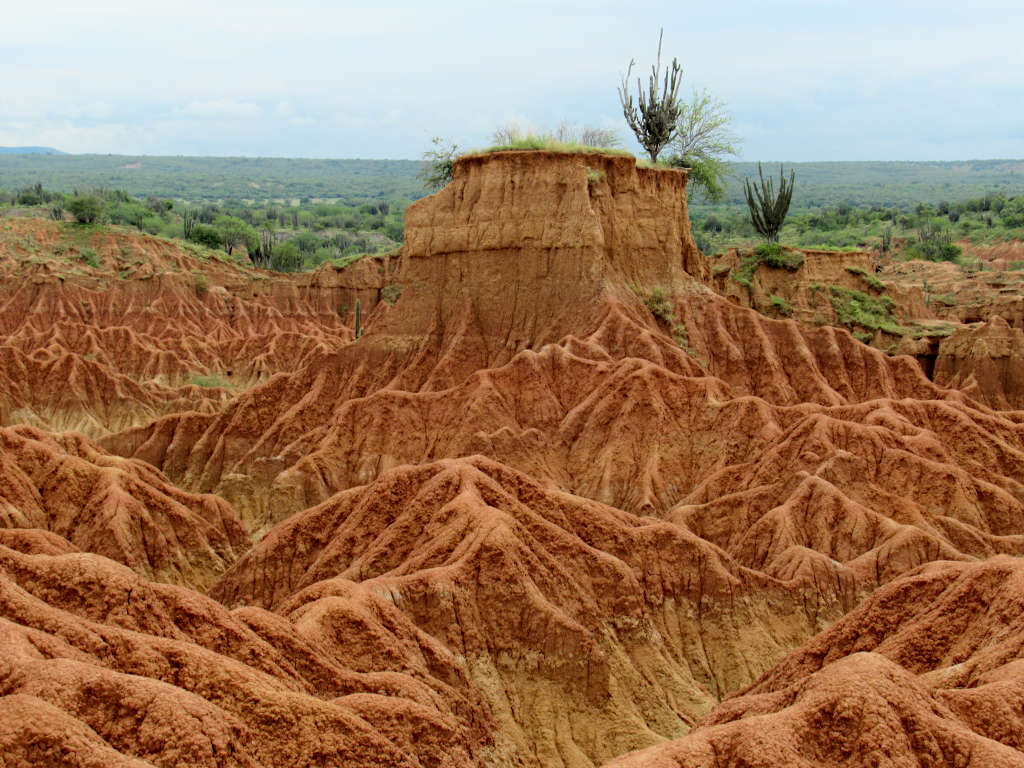
Where is the Tatacoa Desert?
Located in the Huila department, the Tatacoa Desert Colombia is about 6 hours south of Bogota by road. Though that’s not necessarily 6 hours by bus…
The nearest city is Neiva and the nearest town is Villavieja – both sit on the Magdalena River.
What is the Tatacoa Desert Famous For?
There’s 3 things the Tatacoa Desert is famous for:
- Its striking and beautiful Mars-like landscapes in the Red Desert and Grey Desert.
- Stargazing thanks to its remote location and no light pollution.
- Not actually being a desert.
The landscapes are other-worldly, they’re incredible. I couldn’t stop taking photos and didn’t want to leave.
Stargazing is a little trickier because you need clear skies. And unfortunately, when I went, it was cloudy the entire time. But maybe you’ll have better luck…
And lastly, it’s not actually a desert – as everyone will be quick to tell you online. It is, in fact, a dry tropical forest and what you see in the pictures is soil and not sand.
I speak from experience when I say I know it rains, as when I was there the weather was very, very wet! In fact, I’ve never seen rain like it – all accompanied by lightning and thunder that echoed endlessly across the vast landscape.
And you can see pictures at the bottom of this post if you want to see what it was like to walk around after that rain… Spoiler: very muddy.

Is the Tatacoa Desert Worth it?
Absolutely. Even across the varied landscapes of Latin America, the Tatacoa Desert is unique and well worth visiting.
But not only is it unique, it’s totally breathtaking. It feels like an alien planet, and no photo can do it justice. You just have to experience it.
What to do
In the Tatacoa Desert, there’s lots to see but not lots of different things to do. And this makes visiting quite easy.
In fact, I’d say that there’s only 3 main things to do:
- See the desert landscapes
- Stargaze at the skies above
- Relax
And how you mix those 3 is totally up to you. But, here’s some ideas for your trip to the Tatacoa Desert…
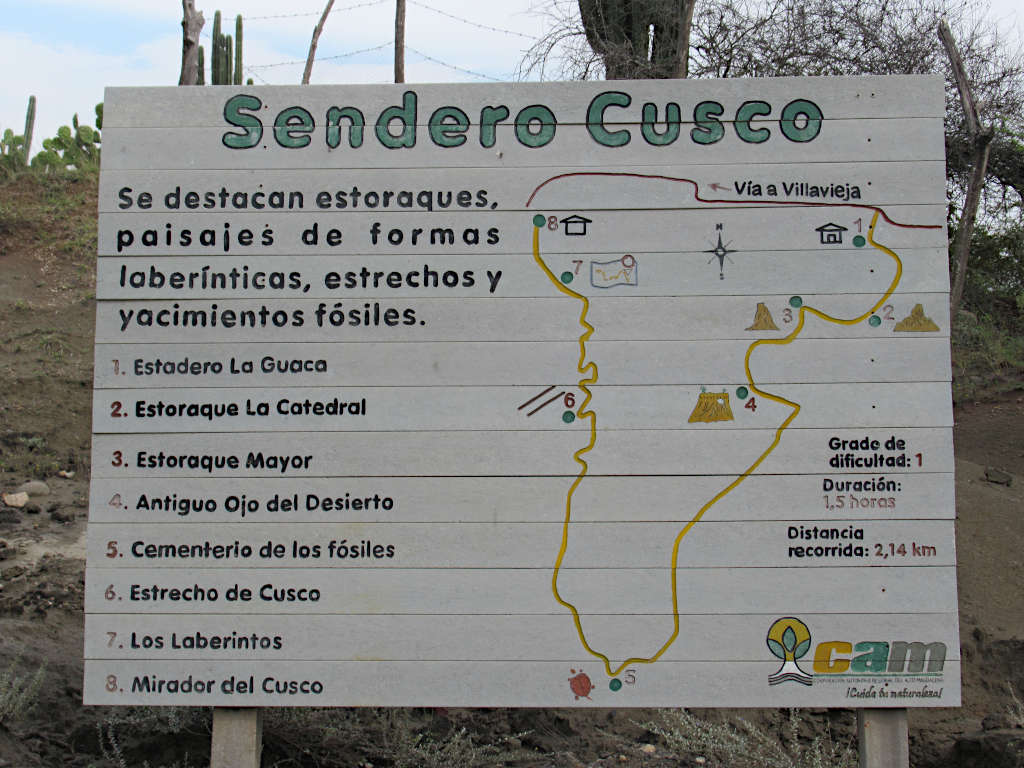
Hike in Red Desert
Also known as the Cusco Labyrinth, the Red Desert really is the highlight of the Tatacoa Desert. This is where you’ll see the brightly coloured mud formations climbing high off the ground.
At both the start and the end of the trail there’s viewpoints where you can look over the Red Desert from above. These are both great spots for photos if you don’t want to walk the circular trail.
But for those who do embark on the 2.1-km trail, they’ll be rewarded with stunning landscapes up close and personal. In fact, it’s one of the best hikes in Colombia. Plus you’ll have a few encounters with goats.
Mostly the trail is easy to follow but in places, it can get a little confusing. It’s a good idea to have Maps.me downloaded – as the walking route is shown on this app.
One thing to know, it’s important not to walk on the mud formations as these will get damaged and crumble easily. And leaving the landscape exactly as you found it for people to enjoy after is an essential of enjoying the outdoors.
Walk through the Grey Desert
If the Red Desert is like Mars, then the Grey Desert is like being on the moon.
And honestly, it’s a little creepy. To me, the mud formations here look a little too much like ghosts!
The trail is 2-km long starting from the roadside entrance all the way around to the swimming pool and parking area. It’s free to do and takes about 90 minutes for the full loop.
If I had to choose only one, I’d pick the Red Desert as it’s much more striking – in my opinion. But if you have time for both hikes, definitely do.
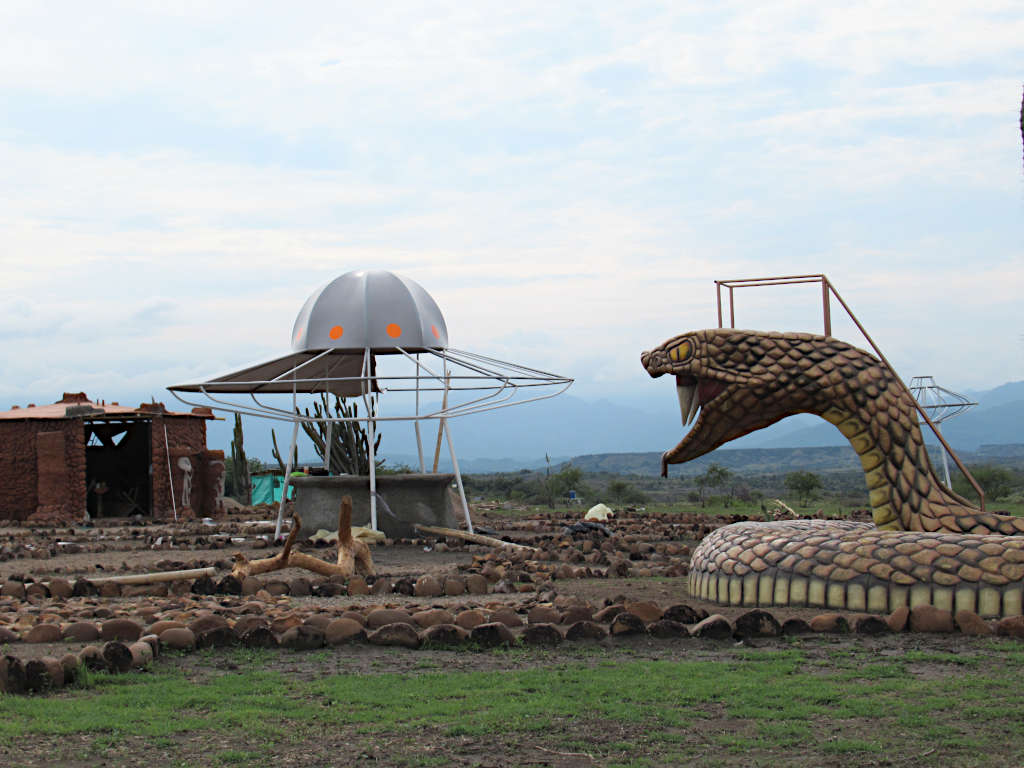
Strike a pose at Tatacoa Selfies
If anything stands out more than bright orange soil formations in the desert, then it’s the large works of art at Tatacoa Selfies. Snakes, alien spaceships, love hearts, mirrors – all perfectly designed for selfies and perspective photos.
Entrance costs 10,000 COP (children under 5 go free) and staff are on hand to take photos. No need to purchase photos, you can use your own phone or camera.
Kids and big kids alike will have fun here for an hour or so…
Valley of the Xilópalos Trail
The third and perhaps least well-known of the hiking trails. The Valle de los Xilópalos trail offers stunning desert views and the chance to see fossils.
A full loop of the circular trail is 4.5 km and takes about 1 to 1.5 hours. Maybe more if it’s hot and you take regular breaks.
There’s a small fee of 3000 COP to access private land on the trail. But, it’s well worth it for the beautiful and varied landscapes.
I recommend following the trail on Maps.me or AllTrails to avoid getting off track. And that means you won’t have to walk any further than needed in the hot desert sun!
Visit the Tatacoa Observatory
Open every day, the Astronomical Observatory is a great place to view the stars, moon and planets through a telescope.
The cost is 10,000 COP per person and the experience lasts 1.5 hours from 7 pm. You’ll get a presentation on astronomy (Spanish only) and time to look through the different telescopes.
But even if you don’t speak Spanish, you’ll still have a fun time looking at the night sky. Just make sure to visit on a clear night otherwise you’ll just see clouds!
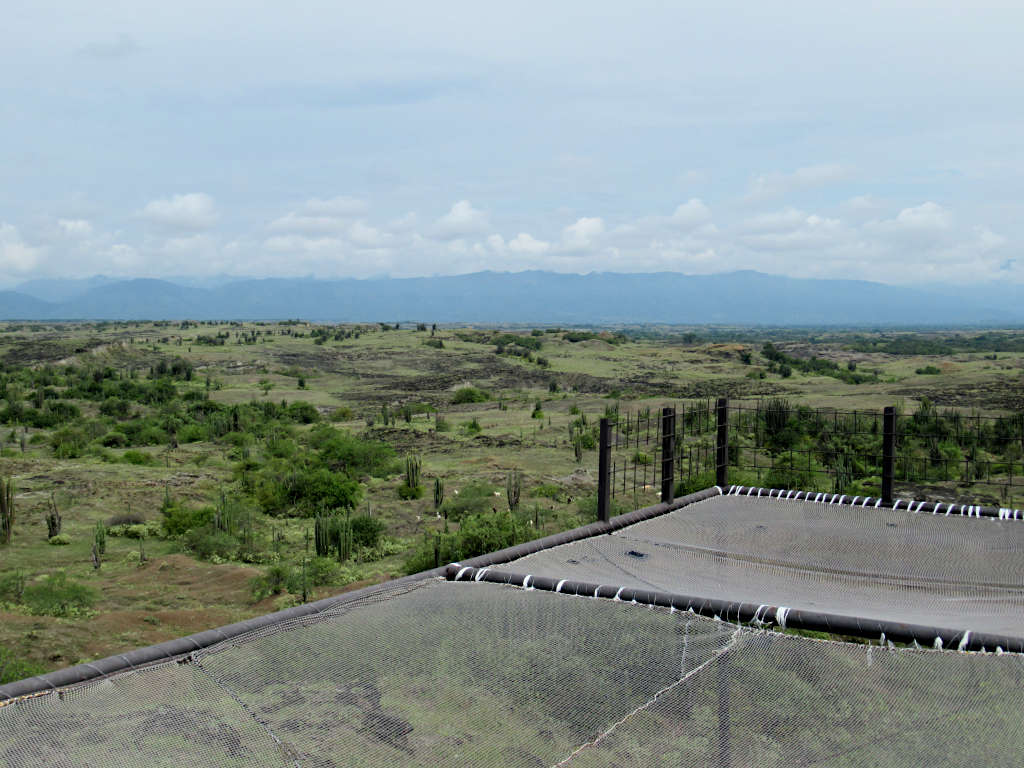
Stargaze at your hotel
You don’t need to go to the observatory to see the stars. All you need is a clear night and somewhere to sit.
Many hotels in the desert have nets set up that you can lay on and look directly up at the sky. Simply wait for it to get dark, then lay back and look out at the universe.
One thing to know though, is that you will be bitten alive laying here! Make sure to wear long trousers and sleeves and wear repellent. I found cocooning myself in my sleeping bag liner worked a treat – although I did look like a worm!
No, you don’t need one but it’s easy enough to get one if you do. The walks in the Red Desert and Grey Desert are simple enough to follow by yourself with the map on a sign nearby (plus GPS for back-up) and it can be fun to enjoy it without time constraints or someone waiting.
If you’re not staying in the desert, I’d recommend hiring a tuk-tuk driver. They do double up as guides and will be able to show you the best spots and give you information. But you don’t have to ask them to accompany you on walks and to viewpoints.
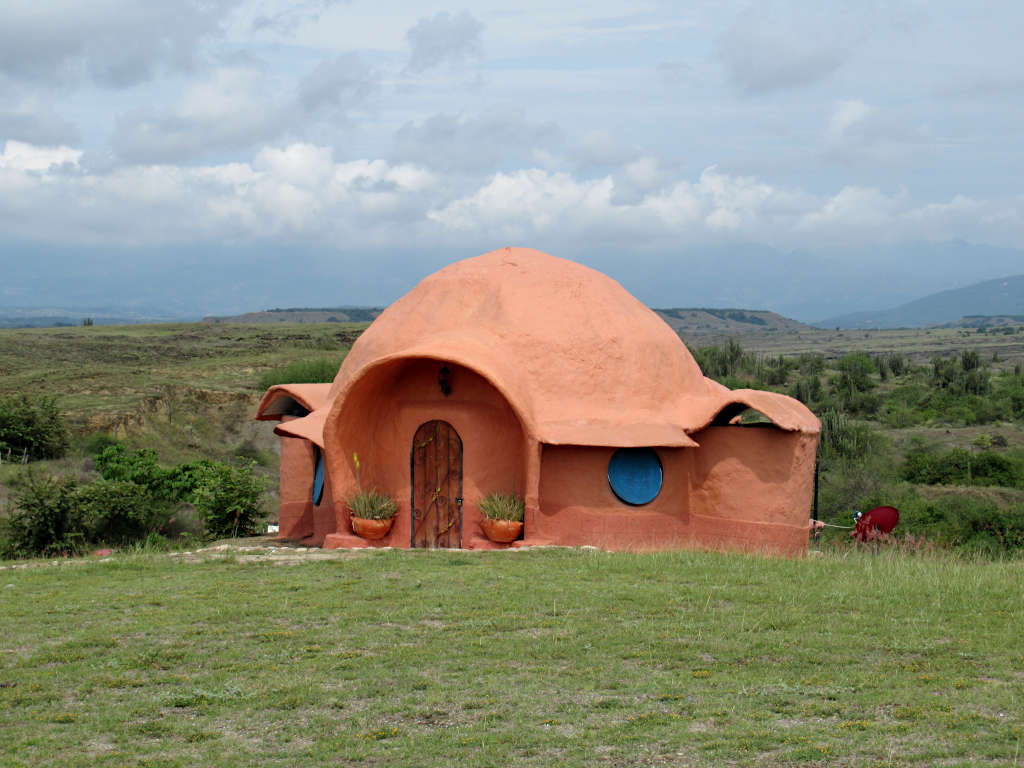
Where to Stay in the Tatacoa Desert
Welcome to the desert. There’s camping, glamping, ecolodges, good hotels, average hotels and pretty poor hotels.
So to help you navigate your accommodation options, I’ve broken it down in the sections below. So whether you want to stay in the desert or outside of it, you’ll find something for you.
One thing to know though is that luxury doesn’t really exist in the desert. So, if anywhere’s claiming to be luxury, definitely check out the reviews and what’s included in the price before booking.
Otherwise, I recommend…
BEST TATACOA DESERT HOTEL: QJI GLAMPING BIOHOTEL
BEST VILLAVIEJA HOTEL: HOTEL COLONIAL VILLAVIEJA
TOP CHOICE FOR BUDGET: MERKEZI SARAY
In the Desert
BEST MID-TIER NEAR GREY DESERT: Qji Glamping Biohotel
Within walking distance of the Grey Desert, this eco-lodge is a popular choice with visitors. Breakfast is included and there’s also a pool and nets for stargazing.
This is the perfect option for those looking to be deep in the desert with a few modern comforts.
BEST MID-TIER NEAR RED DESERT: El Peñon De Constantino
This Tatacoa Desert hotel has a selection of cute huts and one-room cottages. Breakfast is included as standard with the option for dinner on-site too.
Make the most of the pool and stunning views over the varied landscape. Perfect for those who want to be within walking distance of the main sights.
Plus, as this hotel is near the Red Desert (and the observatory), it’s also near Villavieja. Meaning it’s cheaper to get a tuk-tuk to here than other hotels deeper in the desert.
BUDGET OPTION: Posada la Tranquilidad
With a bed on offer for just over 35,000 COP, this really is a budget-friendly option. It also couldn’t be better located since it’s pretty much next to both the observatory and Red Desert.
Sure, there’s no pool and it’s a shared room and shared bathroom. But, it’s a great way to keep costs low if you’re travelling on a budget.
Another plus point is the shared kitchen here, which also allows you to keep costs low. As eating out in the desert a lot can add up quickly.
In Villavieja
BEST VILLAVIEJA MID-TIER: Hotel Colonial Villavieja
Boasting a pool, air conditioning, TVs and bikes for hire, this hotel is your one-stop shop in Villavieja. Rooms sleep up to 4 people, making it perfect for couples, friends and families.
And conveniently located near the central Plaza in Villavieja. You’ll have restaurants, shops and the bus stop to/from Neiva all on your doorstep.
TOP HOSTEL EXPERIENCE: Tubo Hotel La Tatacoa
Although not technically a hostel, this place is as close as you’re going to get. With its funky-coloured tube rooms, swimming pool and communal lounge areas, it’s a great place to meet other travellers.
If you’re looking for fun and don’t mind sacrificing some space in your room to be around like-minded people, this is the place for you…
GREAT FOR BUDGET: Merkezi Saray
Whether you’re just staying one night before heading into the desert. Or whether you’re basing yourself in Villavieja and taking day trips to the desert. You can’t go wrong with Merkezi Saray.
The staff are friendly, the beds are comfy and the prices are low. And double and family rooms are available – with and without air con at a slight price premium.
If no-frills, does-the-job accommodation is what you’re looking for, this is where you’ll want to be…
Travelling to Tatacoa takes pretty much a full day from everywhere. So I’d recommend spending the first night in Villavieja and then 2 nights in the desert.
But given the distance travelled and the hours of daylight, at a minimum I would say you’ll need one full day. This could be a 2-night stay in Villavieja. Arrive on Day 1, see the desert on Day 2 and then onward travel on Day 3.
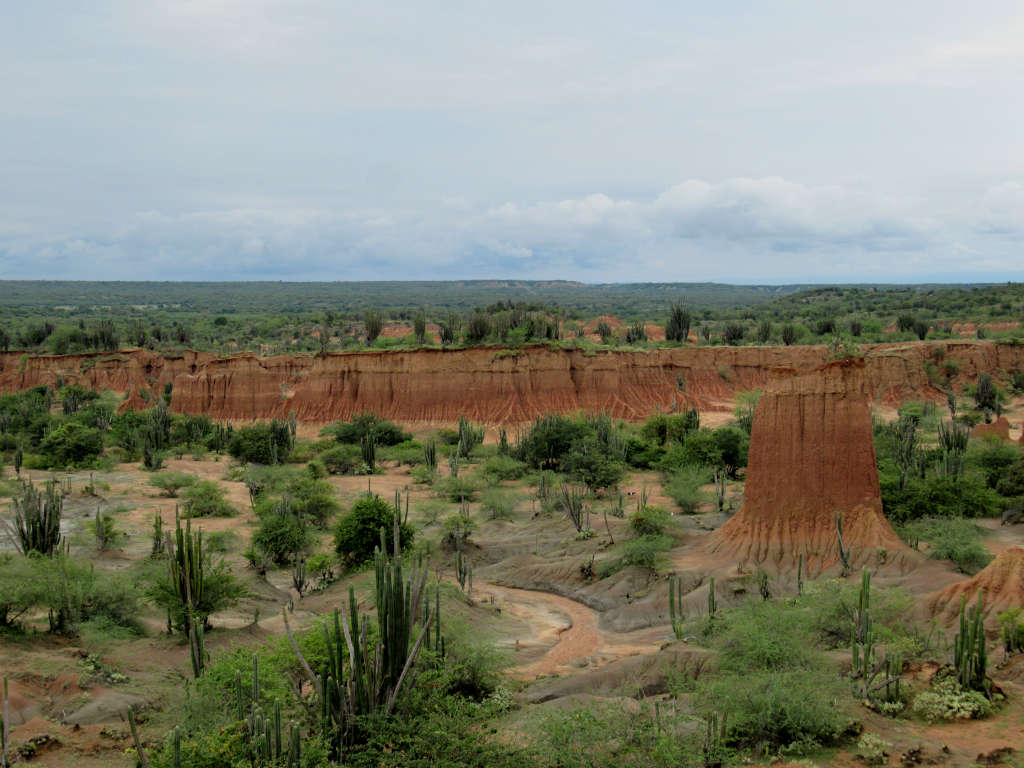
Eating and Drinking
In all honesty, the choice of where and what to eat and drink in the Tatacoa Desert Colombia is very limited.
It’s a remote location that hasn’t – yet – attracted mass tourism. There’s a couple of restaurants near the Grey Desert and a couple near the Red Desert, all serving typical Colombian food.
Because of this, it’s common to have all your meals at the hotel you’re staying in. Many include breakfast and a lot have the option to pay extra for dinner – typically a set menu – and also sell a basic range of drinks.
TOP TIP: Bring lots of snacks and drinks. You’ll have the best choice in Neiva but you can also pick them up in Villavieja.
The small town of Villavieja does have a few more options for restaurants and bars. But not exactly like you’re spoilt for choice – this is rural Colombia, after all…
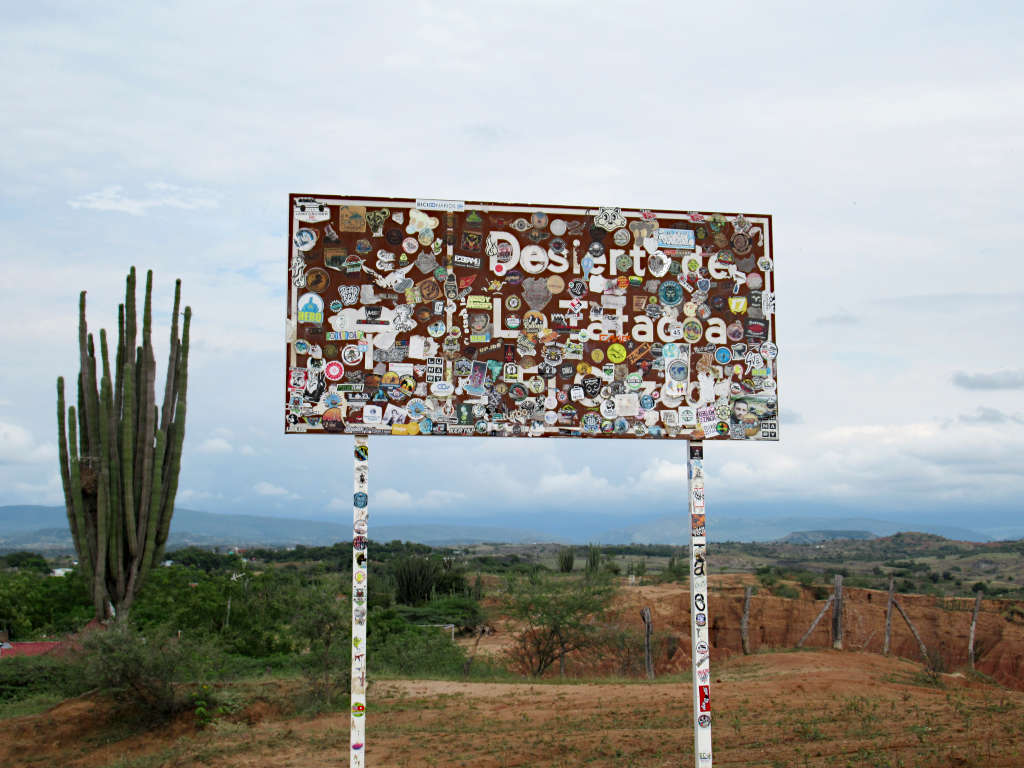
Transport in the Desert
The hot weather combined with the large distances between landmarks within the Tatacoa Desert means you probably need transport to get around.
The Red Desert to the Grey Desert, for example, is almost 8 km. That’d be about 90 minutes of walking in the blazing sun.
Tuk-tuks are a popular way to get around the desert. And they’re the easiest way to get from Villavieja into the desert.
And the prices are fixed so you should always know upfront what you’re going to pay. Although they are more expensive than what you might be used to paying in Colombia.
How do I get from Villavieja to Tatacoa Desert?
The easiest way to get to the desert from Villavieja is using a tuk-tuk. Although a taxi might be better for families or larger groups.
Prices from Villavieja to and between every hotel and the landmark in the Tatacoa Desert Colombia are fixed. Every tuk-tuk driver will charge you the same and they have a document listing the prices.
Tuk-tuks are great not just for getting into the desert. But also as transport for a day trip from Villavieja if you’re not staying in the desert.
RECOMMENDATION: Looking for a tuk-tuk driver for transport or a day trip? I can recommend Claudia – our lovely driver – contact her on +57 322 7415 454 or on Instagram @tatacoa.maklauss.
Tours
Guide-led Tatacoa Desert tours are available from both Villavieja and Neiva.
These typically visit the Red Desert and Grey Desert – although sometimes just to the viewpoints and not with enough time to hike the loops here. Other common stops include the Villavieja Paleontology Museum and the Los Hoyos Swimming Pool.
Shorter tours to one or two specific destinations are available from Villavieja. These can be booked through agencies in the town.
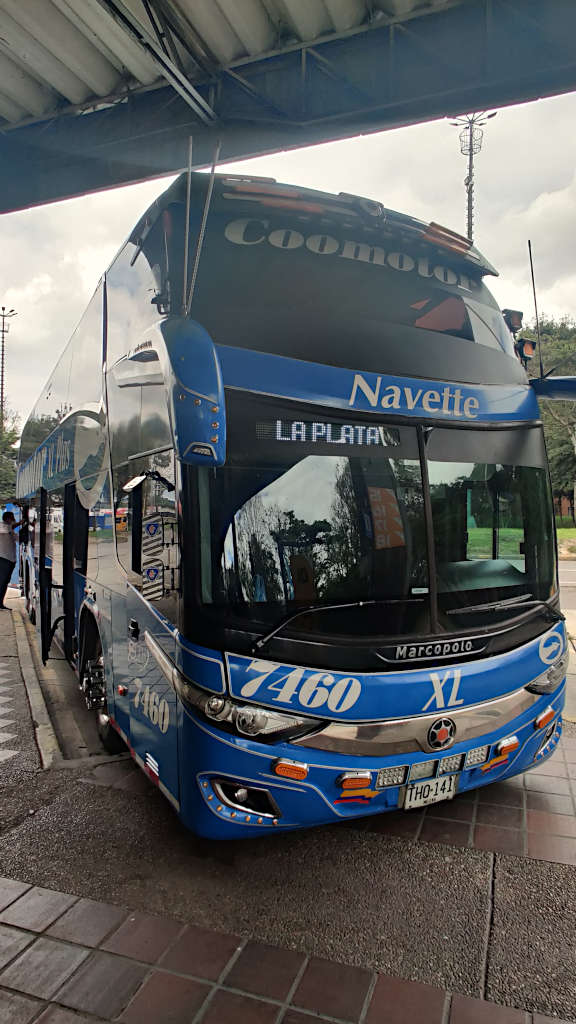
How do you get to the Tatacoa Desert Colombia?
Getting to the Tatacoa Desert isn’t the easiest. But it’s worth it, I promise. And its remote location is all part of the magic.
You can fly from Bogota to Neiva. Or from much of the south of Colombia, you can use a combination of local and long-distance buses to end up in the desert.
But this does mean you’ll need pretty much a full day to travel there and a full day to travel somewhere else afterwards.
How do I get from Bogota to Tatacoa Desert?
From Bogota, you have 3 options to get to the desert.
- Bus to Neiva (10 USD), a truck or minivan to Villavieja (10,000 COP) and then a tuk-tuk
- Bus to Aipe (13 USD), moto taxi to the river (6000 COP), boat to Villavieja (last service 6 pm; 4000 COP) and then a tuk-tuk
- Fly to Neiva (40+ USD), taxi to the bus station (20,000 COP), truck or minivan to Villavieja (10,000 COP) and then a tuk-tuk
I recommend using Coomotor services to go from Bogota to Aipe or Neiva. They often have double-decker buses and if you can grab the seats upstairs at the front, you get a great view.
Personally, I wouldn’t recommend doing this journey from Bogota to Tatacoa Desert overnight as it’s only 5 hours to Aipe and 6 hours to Neiva. However, I would book a fairly early bus (10 am or before) to ensure you make the last services to Villavieja.
On the other hand, direct flights from Bogota to Neiva take 1 hour and prices start at 40 USD one way without check-in bags. However, given the time you’ll need to get to the airport, wait for your flight and then get to Neiva Bus Station, you probably won’t save too much time.
If you’re travelling via Aipe, read the section below on how to get from Aipe to Villavieja and the desert.
Likewise, if you’re travelling via Neiva either by bus or plane, read the section below on getting from Neiva to Tatacoa Desert and Villavieja.
How do I get from Salento to Tatacoa Desert?
With no direct buses from Salento to the Tatacoa Desert Colombia – or to Neiva, in fact. You’ll have to travel first to Armenia, then take a bus to Aipe or Neiva, followed by transport to Villavieja and the desert.
Buses are your only option as there’s no flights between Armenia and Neiva. So, when you’re ready to leave the charming town of Salento, the overland journey awaits.
Your two options are:
- Local bus to Armenia (6000 COP), bus from Armenia to Aipe (17 USD), moto taxi to the river (6000 COP), ferry to Villavieja (4000 COP) and tuk-tuk to the desert – or,
- Local bus to Armenia (6000 COP), bus from Armenia to Neiva (18 USD), truck or minivan to Villavieja (10,000 COP) and tuk-tuk to the desert
If you’re travelling via Aipe, remember, the last river crossing happens around 6 pm. So I recommend making sure you arrive in Aipe by 5.15 pm to allow for any queues at the crossing.
The bus from Armenia takes around 5.5 hours to reach Aipe and 6.5 hours to reach Neiva. Because of this, I don’t recommend travelling overnight (when journey times are even quicker) but rather get on the road early in the morning.
However, there’s only one daytime bus from Armenia so you may end up travelling overnight and arriving early. If you do this, I recommend travelling to Neiva as you’ll be able to stay in the bus station as the stop at Aipe is at the side of the road.
For more information on getting from Aipe and Neiva to Tatacoa Desert and Villavieja, read the sections below.
Aipe to Villavieja
Travelling via Aipe saves you heading an hour further south only to come back on yourself – taking another hour. However, it does require you to navigate a river crossing.
- Once you’re off the bus, grab a moto taxi to the river for 6000 COP. Moto taxis are often waiting but you can also ask in nearby cafes etc
- At the river, take the motorbike and passenger ‘ferry’ across to Villavieja for 4000 COP.
The ferry crossing between Aipe and Villavieja runs from 6 am to 6 pm. So, you need to make sure you’re arriving in Aipe by bus no later than 5.15 pm.
Neiva to Villavieja
The truck or minivan services from Neiva to Villavieja leave from inside the Terminal de Transport on the southern side of Neiva.
It’s a bit like a maze inside the terminal, but it’s not that big. So you’ll find the company going to Villavieja soon enough – just look at the signs above the ticket office windows – they’re near a door out to where the trucks and minivans park.
Tickets for the journey cost 10,000 COP per person – buy them at the bus station. And you’ll either have a seat in a minivan or enjoy a bumpy ride on benches in the back of a truck.
There didn’t seem to be set times and we set off when the truck/minivan was almost full. The journey from Neiva to Villavieja takes about 1.5 hours.
You can either get out at the end when it stops in the plaza or shout to get out sooner if you’re going past your hotel.
Villavieja to the Tatacoa Desert
If you’re continuing straight from Villavieja to the Tatacoa Desert, find a tuk-tuk and give them the name of your hotel.
The drivers have a list of all hotels and landmarks with set prices for each from Villavieja. Unfortunately, you can’t haggle here.
You’ll probably have the easiest time finding a driver by looking in the plaza or asking at a hotel reception desk for them to order you one.

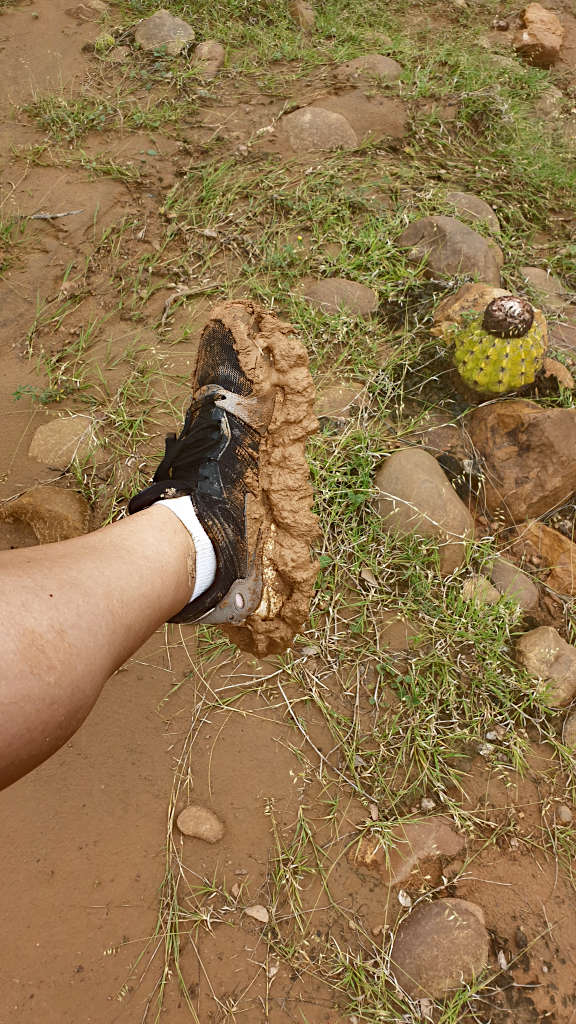
Other Important Things to Know
- Don’t expect high-speed internet – this isn’t a place to work remotely. It’s the middle of nowhere, and I’m pretty sure it’s satellite internet so mostly good enough to check emails, read the news, etc.
- There’s no ATMs in the desert and only 1 in Villavieja. Bring plenty of cash – more than you think you need in case of an emergency or a change of plans.
- Rain in the Tatacoa Desert isn’t that unlikely and it makes life difficult – I speak from experience. When it rains, it pours. And as it’s soil, not sand, the ground soaks it all up and turns to thick, wet mud, making it hard to walk anywhere as you’re literally sinking!
- Unsurprising, there are so many bugs. If you have the light on in your room after dark, expect many to join you. And if you sit outside, expect to get bitten. In the evenings, cover up fully (I’m talking tuck your trousers into socks) and double up with insect repellent otherwise you’ll look like a polka dot human…
If you have any questions or want any more information, drop a comment below and I’ll get back to you!
Information is correct as of August 2023 but is subject to change in future.
Find your Colombia Travel Inspiration…
SANTANDER: San Gil Santander: Your Guide to Colombia’s Adventure Capital
MEDELLIN: Comuna 13 Medellín (Full Guide & Tour Recommendations)
LA GUAJIRA: Palomino, Colombia (Discover Santa Marta’s Trendier Neighbour)
SANTANDER: Chicamocha Canyon Complete Guide | Truly Spectacular!
BOGOTA: Cascada La Chorrera, Choachi: Colombia’s Tallest Waterfall
great place to visit, thank you for creating this article